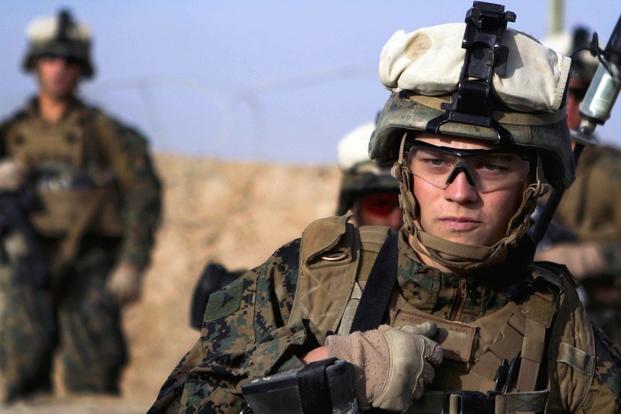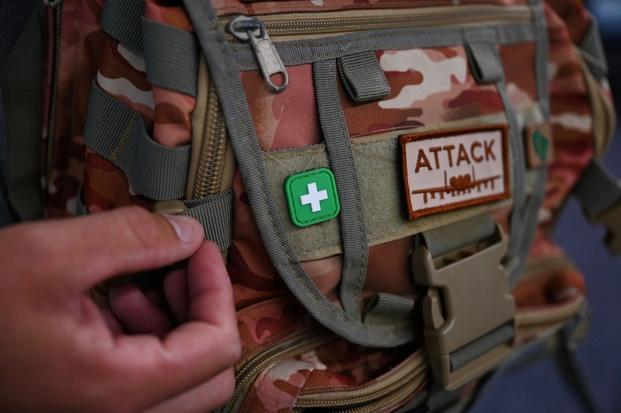There’s a stigma that veterans, especially those who were in combat, are defined by what they did on the battlefields.
However, a new study from Pennsylvania State University, centering around post-9/11 veterans, found that for most, aspects of their mental health are shaped by other factors too, including traumatic moments from their youth, gender roles, and other deployment experiences.
One of the study’s co-authors, Daniel Perkins, a principal scientist at the Clearinghouse for Military Family Readiness at Penn State, a social science research institute, also serves as a Professor of family and youth resiliency and policy for the university’s College of Agricultural Sciences. Perkins said most veterans manage the transition to civilian life successfully, but others find it challenging.
“It can be an extended and complicated process,” Perkins said. “Our goal was to understand better how early life experiences, deployment factors, and gender together shape mental health outcomes so that services can be better tailored to veterans’ needs.”
A 3 Year Study
Research for the study, funded by the Henry M. Jackson Foundation for the Advancement of Military Medicine, was gathered by The Veterans Metrics Initiative and recently published in the Journal of Clinical Psychology. Casting a wide net, the study was created to examine the mental health of post-9/11 veterans as they progressed throughout life as civilians. The study followed about 9,600 veterans who were no longer active-duty members beginning in late 2016, checking in with them at six points throughout the following three years. Veterans responded to queries about childhood traumas, deployment experiences, and whether they faced combat. Respondents also noted if they had bouts of depression and anxiety.

Results showed that while long-term mental health factors remained fairly balanced during those three years, certain factors forecasted alternative psychological symptoms.
For example, the number of deployments and their length of time showed greater impact for mental health issues in different circumstances for men and women. Men serving longer deployments battled more mental health problems, compared to veterans with briefer, more frequent tours. Perhaps it’s a sign of resilience, but the study revealed that soldiers with more than one deployment often had better mental health outcomes.
Some veterans choose military life to escape a poor childhood. ACEs, a questionnaire examining adverse childhood experiences, charts physical and substance abuse by an adult in the home, as well as neglect. The study showed that veterans who noted three or more ACEs often reported the highest levels of depression and anxiety.
Exposure to dangerous combat situations was also a factor in mental health issues; however, results were different between men and women. Women with combat experience often had a sharp drop in mental health effects throughout their first year following active duty. But the decline was followed by a spike in symptoms, showing just a short recovery. Alternatively, men’s symptoms stayed consistently high throughout the study.
In general, female soldiers reported higher ACEs scores, despite having less combat experience than men. Their mental health conditions were more likely to follow different routes than men, revealing the necessity for custom care, according to researchers.
“These findings underscore that the transition to civilian life is not a single moment, but a process influenced by experiences across the life span,” said lead author Mary M. Mitchell, research professor at the Clearinghouse. “By following veterans over three years, we were able to see how patterns emerge that would be invisible in a one-time survey.”

Tailored Care Needed
Researchers said the results magnify the need for focused support programs for veterans early in their transition to civilian life. Testing for ACEs could help mental health providers pinpoint veterans at a higher risk for forming adverse mental health outcomes following military service, allowing doctors to find support systems for veterans displaying signs of depression and anxiety.
In addition, the results significantly show the importance of gender-responsive care. Female veterans are more likely to display different mental health symptoms, making them more likely to have endured trauma prior to joining the service. Researchers believe giving access to more personalized approaches could help as they progress into civilian life.
“This kind of long-term data helps us see the full picture of reintegration,” said co-author Keith R. Aronson, director of the Clearinghouse, associate director of the Social Science Research Institute, and research professor in the Department of Biobehavioral Health. “It reminds us that support for veterans can’t stop after the first few months. Monitoring changes over time allows us to intervene earlier and more effectively when new challenges arise.”
















